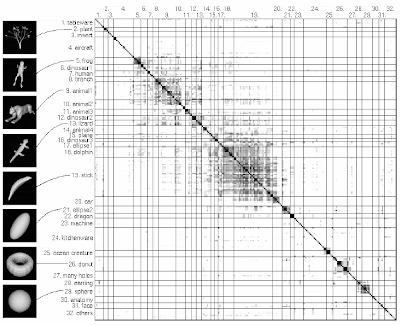
http://images.google.com/imgres?imgurl=http://www.lems.brown.edu/vision/people/leymarie/Refs/CompVision/Ridges/Figs/similar.gif&imgrefurl=http://www.lems.brown.edu/vision/people/leymarie/Refs/CompVision/Ridges/Shinagawa.html&h=594&w=731&sz=78&hl=en&start=8&tbnid=5SEo0mmVgBwleM:&tbnh=115&tbnw=141&prev=/images%3Fq%3Dsimilarity%2Bmatrix%26gbv%3D2%26hl%3Den
The above image is a similarity matrix of 230 different models divided into 32 different categories. The darker squares indicates the models that are higher in similarity. A similarity matrix shows similarity between two different models.
No comments:
Post a Comment